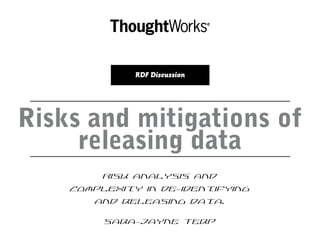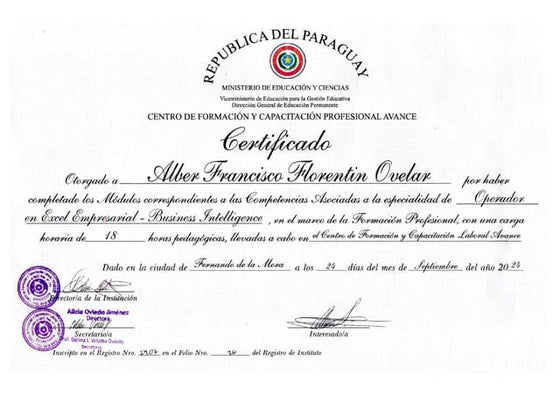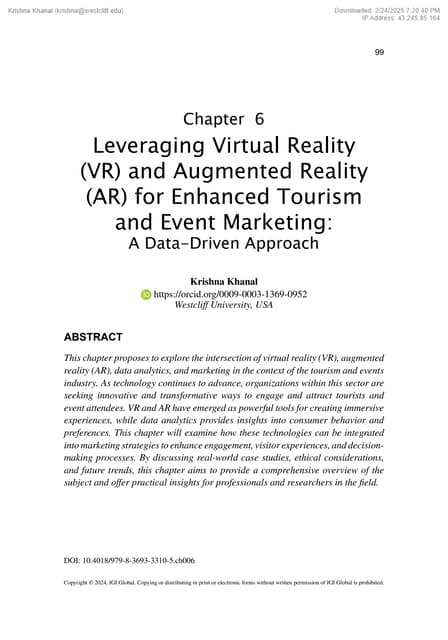Sjt risks and mitigations of releasing data
This document discusses risks and mitigations when releasing data. It defines risk as the probability of something happening multiplied by the resulting cost or benefit. There are risks of physical harm, legal harm, reputational harm, and privacy breaches to data subjects, collectors, processors, and those releasing the data. Risk levels can be low, medium, or high. The document provides strategies for mitigating risks such as considering partial data releases, including locals to assess risks in local languages/contexts, and being aware of how data may interact with other datasets. It also discusses handling personally identifiable information by learning to spot red flags like names, addresses, exact locations, codes, and uncommon terms that could identify individuals.




















Recommended




























































More Related Content
Similar to Sjt risks and mitigations of releasing data (20)














































More from kjantin (16)






























Recently uploaded (20)
























Sjt risks and mitigations of releasing data
- 1. Risks and mitigations of releasing data Risk analysis and complexity in de-identifying and releasing data. Sara-Jayne Terp RDF Discussion
- 2. First, Do No Harm ŌĆ£If you make a dataset public, you have a responsibility, to the best of your knowledge, skills, and advice, to do no harm to the people connected to that dataset. You balance making data available to people who can do good with it and protecting the data subjects, sources, and managers.ŌĆØ 2
- 3. What is risk? What is the risk here? 3
- 4. RISK ŌĆ£The probability of something happening multiplied by the resulting cost or benefit if it doesŌĆØ (Oxford English Dictionary) Three parts: ŌĆóCost/benefit ŌĆóProbability ŌĆóSubject (to what/whom) 4
- 5. Subjects: Physical 5 ŌĆ£Witnesses told us that a helicopter had been circling around the area for hours by the time the bakery opened in the afternoon. It had, perhaps, 200 people lined up to get bread. Suddenly, the helicopter dropped a bomb that hit a building
- 10. Risk OF What? ŌĆó Physical harm ŌĆó Legal harm (e.g. jail, IP disputes) ŌĆó Reputational harm ŌĆó Privacy breach 10
- 11. Risk to Whom? ŌĆó Data subjects (elections example) ŌĆó Data collectors (conflict example) ŌĆó Data processing team (military equipment example) ŌĆó Person releasing the data (corruption example) ŌĆó Person using the data 11
- 13. piI How I handle it 13
- 14. PII ŌĆ£Personally identifiable information╠²(PII) is any data that could potentially identify a specific individual. Any information that can be used to distinguish one person from another and can be used for de- anonymizing anonymous data can be considered╠²PII.ŌĆØ 14
- 15. Learn to spot Red Flags ŌĆó Names, addresses, phone numbers ŌĆó Locations: lat/long, GIS traces, locality (e.g. home + work as an identifier) ŌĆó Members of small populations ŌĆó Untranslated text ŌĆó Codes (e.g. ŌĆ£41ŌĆØ) ŌĆó Slang terms ŌĆó Can be combined with other datasets to produce PII 15
- 16. Consider Partial Release Release to only some groups ŌĆó Academics ŌĆó People in your organisation ŌĆó Data subjects Release at lower granularity ŌĆó Town/district level, not street ŌĆó Subset or sample of data ŌĆśrowsŌĆÖ ŌĆó Subset of data ŌĆścolumnsŌĆÖ 16
- 17. Include locals Locals can spot: ŌĆóLocal languages ŌĆóLocal slang ŌĆóInnocent-looking phrases Locals might also choose the risk 17
- 18. Consider Interactions Between Datasets 18
- 19. Learn From Experts Over to youŌĆ” 19
- 20. THANK YOU For questions or suggestions: Responsible Data Forum For questions or suggestions: Responsible Data Forum









